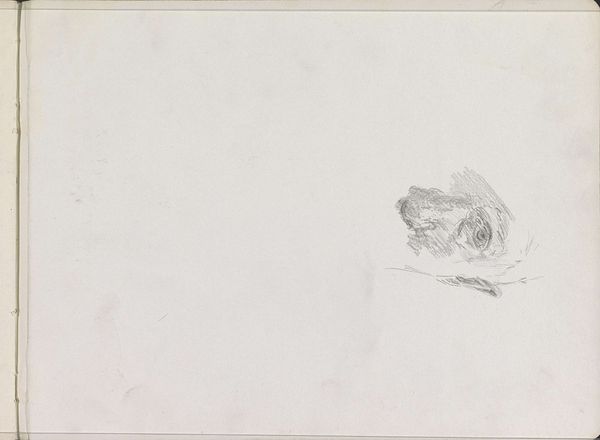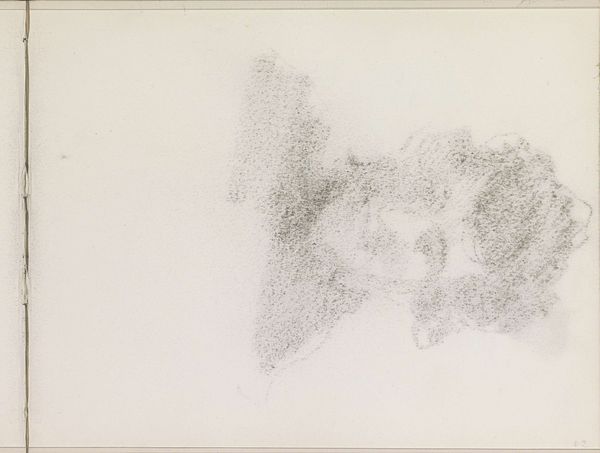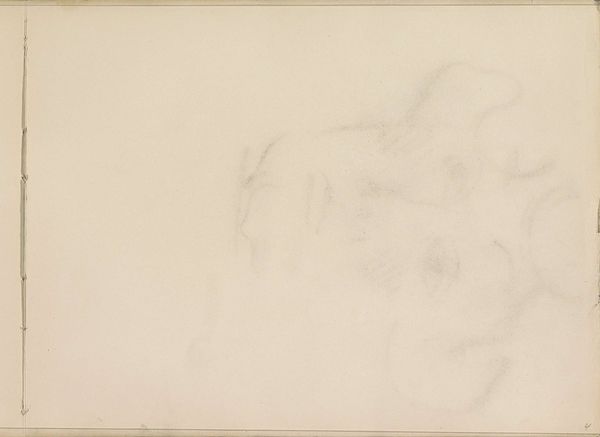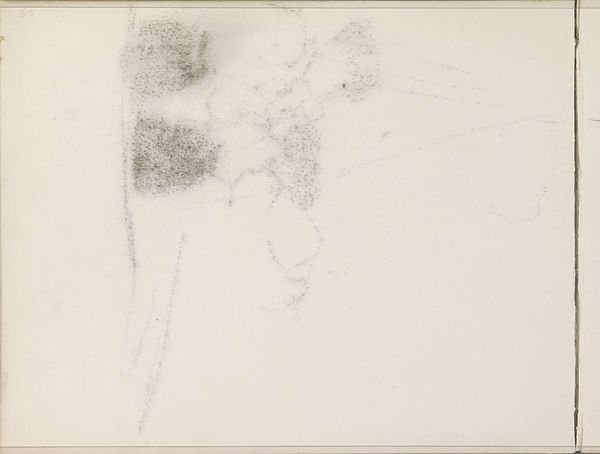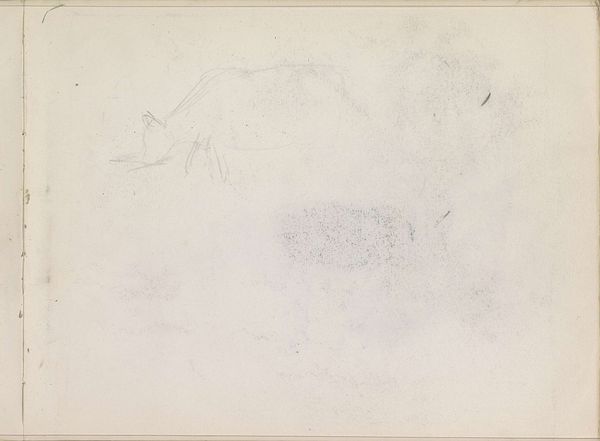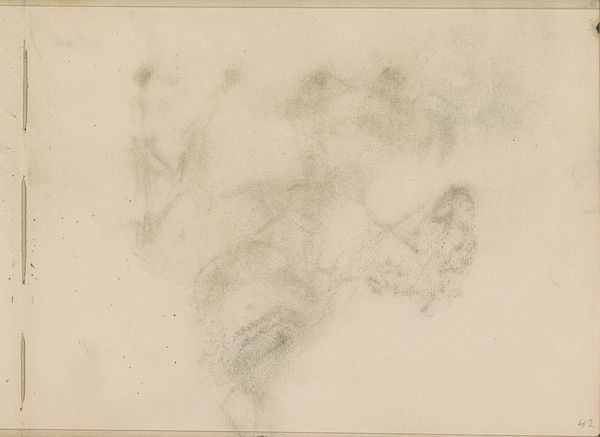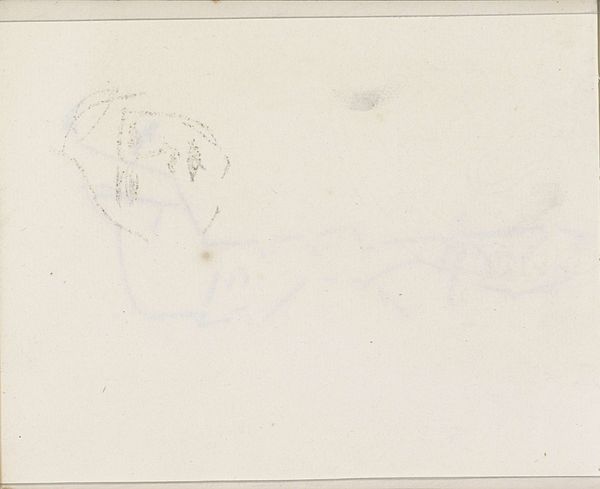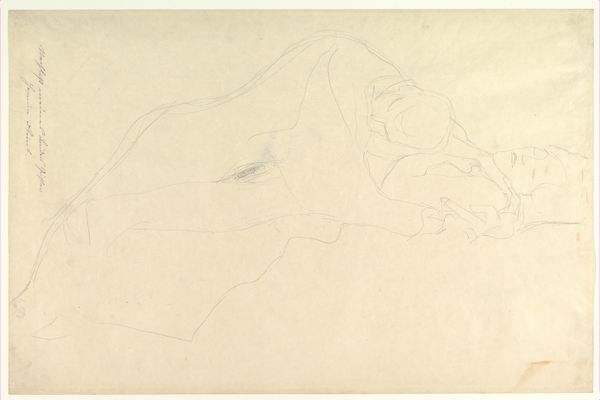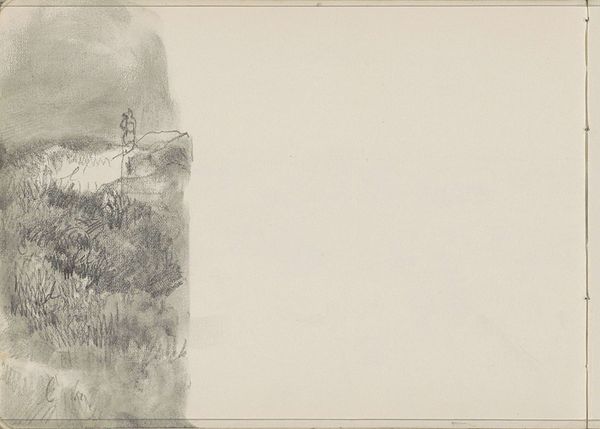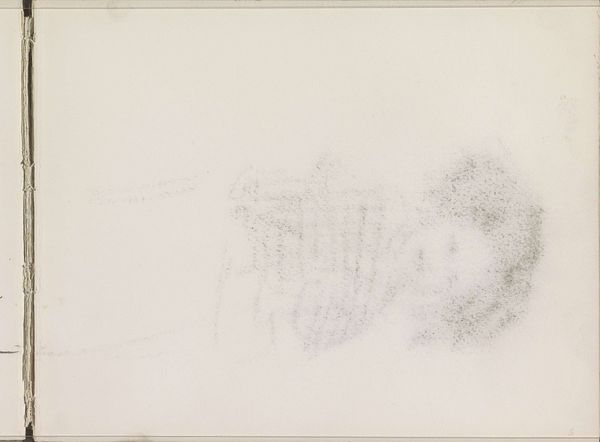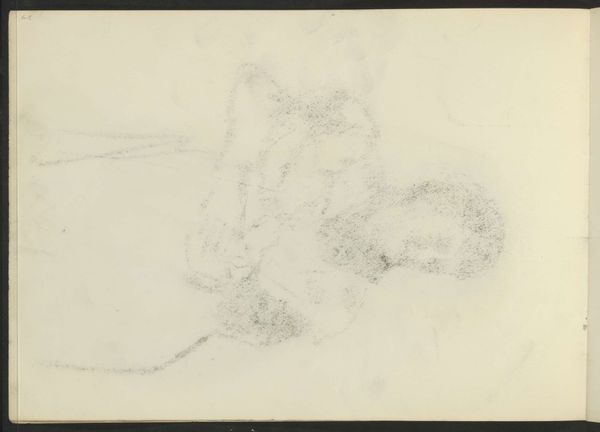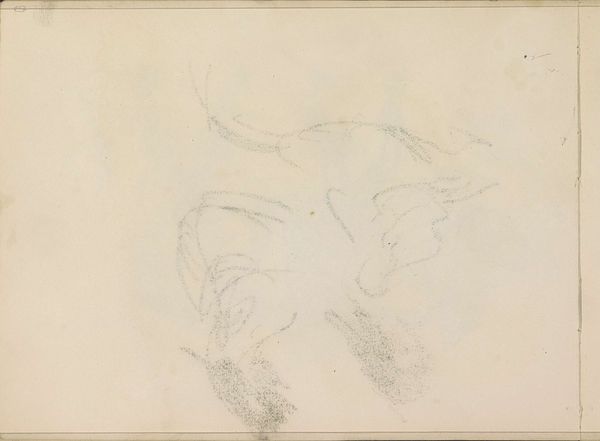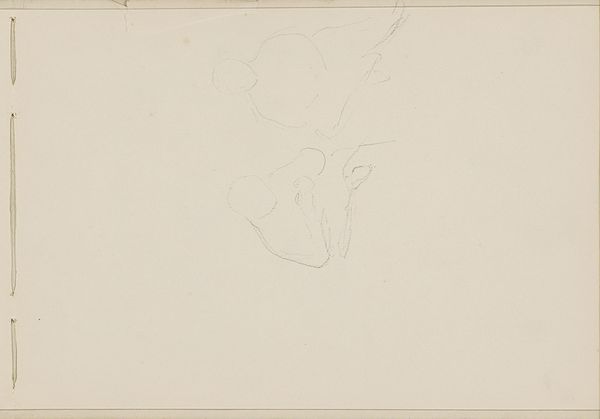
Copyright: Rijks Museum: Open Domain
Curator: Isaac Israels' "Abklatsch van de krijttekening op blad 24 verso," a drawing made sometime between 1875 and 1934. I understand that translates to "rubbing of the chalk drawing on page 24 verso." A ghostly trace indeed! Editor: Ghostly is right! My initial thought is that it is delicate to the point of disappearing. Almost like a memory fading. Curator: It's incredibly minimal. Israels used graphite and pencil, creating a shadowy impression of figures that might almost be obscured completely by the blank space. We can almost see the labor in that smudging. Editor: I am seeing process over product, definitely. Think about the way the act of rubbing transfers an image – it’s inherently reproductive, taking something existing and re-presenting it. What’s more valuable here – the original chalk drawing or its double? Or just the labor? Curator: Exactly! It feels vulnerable, as though the process itself, the physical act of creating this image, is just as significant as any intended final product. The labor is plain. Did he mean to share all of this, or would he want to hide it, if given the chance? Editor: I like that vulnerability. There is also a rawness to it – we see the literal imprint of something else, but the paper shows so little impact. Almost like Israels asks what marks something. Curator: He's capturing form itself, as ephemeral and fleeting as it can be. Consider how impressionism focuses on light. Is this the light reflecting on the bodies? We almost lose track of their forms and melt with it. Editor: I find myself considering the social implications, the everydayness of "form" transformed into the hallowed space of "art". How labor manifests as an impression. Curator: Thinking of it in that way... Yes, "Abklatsch" isn't just about portraying figures; it's capturing their existence as well, and that existence's relationship to both space and time, and the materiality that keeps them together, literally. Editor: So well said. What began as a delicate sketch really opened to a contemplation of materials and the reproduction of work.
Comments
No comments
Be the first to comment and join the conversation on the ultimate creative platform.
